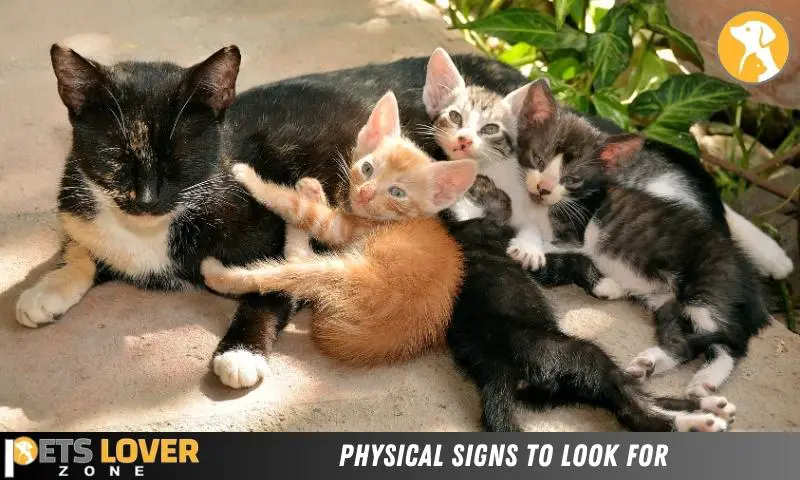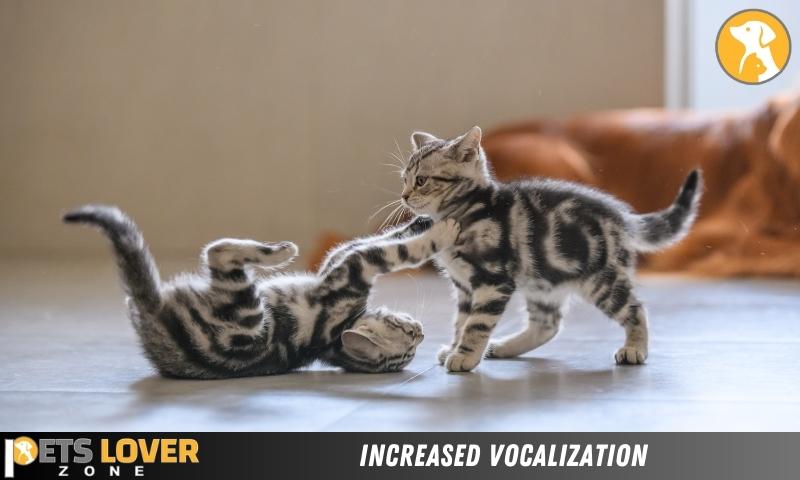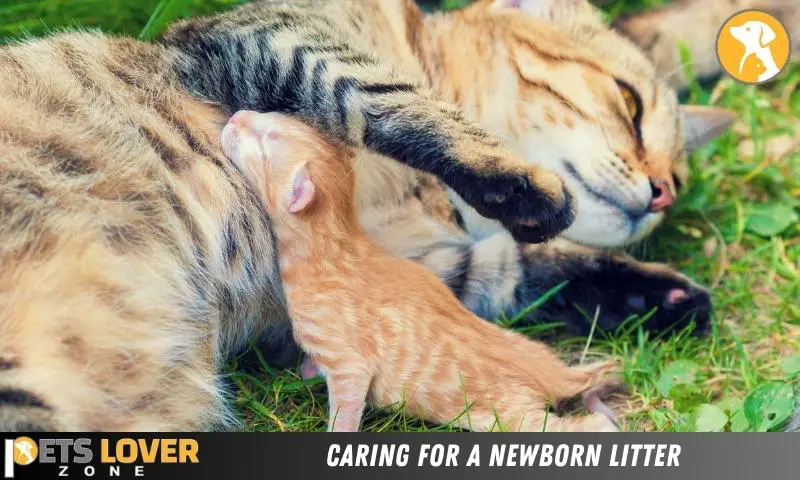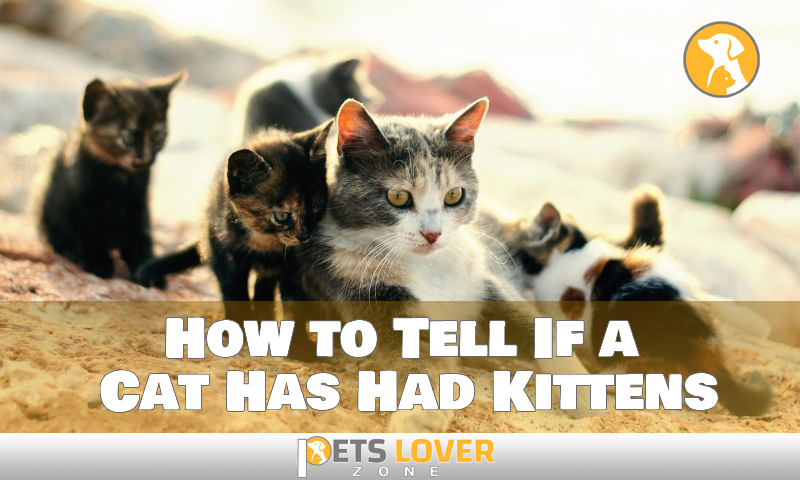To tell if a cat has had kittens, check for physical changes in the cat’s body like swollen teats, a lack of appetite, and frequent meowing. These are all indications that your cat may have given birth.
Welcoming kittens into your home can be an exciting experience. However, if you have a female cat that has been allowed to roam outside and you notice some physical changes in her body, it could mean that she has given birth to a litter of kittens.
As a pet owner, it’s important to observe your cat’s behavior and look for signs that can tell you if your feline friend has had kittens. In this article, we’ll discuss how to tell if a cat has had kittens and what you can do to help your cat if she has given birth.
Physical Signs To Look For

Changes In Behavior
Cats are known for their unique personalities, but there are some changes in their behavior that can tell if a cat has had kittens. Here are some common behaviors to look for:
- Increased vocalization: A female cat may become more vocal than usual when she has had kittens. She may meow more often and in a different tone.
- Secluded behavior: If a cat suddenly disappears and chooses to isolate herself, it may indicate that she has given birth to kittens.
- Protective behavior: A mother cat may become more protective, aggressive, or territorial towards other pets or humans.
- More affectionate: Some mother cats increase their bonding and friendly behavior and begin seeking attention more than usual.
Nesting Behavior
Nesting is one of the most common behaviors of pregnant cats preparing to give birth. They try to find a comfortable and safe spot to give birth to their kittens. Here are the signs of nesting behavior to look out for:
- Trying to find a secluded spot: A pregnant cat may search for a quiet and secure spot to give birth, such as under the bed, in a quiet corner, or in a closed box.
- Gathering soft materials: A mother cat will usually gather materials such as soft fabrics, blankets, and even newspapers to make a cozy nest for her kittens.
- Scratching: A cat may scratch the ground or floor where she has chosen to make her nest.
Changes In Appetite
As a new mother, a cat’s appetite may fluctuate significantly. Here are some signs to look for when it comes to changes in appetite:
- Decreased appetite: After giving birth, a mother cat may eat less than usual at first. This loss of appetite should only be temporary.
- Increased appetite later on: As time goes on, a mother cat will start to consume more food as she produces more milk for her kittens.
Swollen And Pink Nipples
One of the most telling signs that a cat has given birth is the appearance of swollen and pink nipples. Pay attention to the following signs:
- Discharge from the nipple may be present right before and during birth.
- The nipples will appear noticeably larger after birth.
- They often stay enlarged and pink with a prominent milk flow for several weeks.
Weight Loss
It’s normal for a cat to lose a bit of weight after giving birth, but it’s important to monitor the loss and ensure it’s not excessive. Here are some things to keep in mind:
- Cats can lose up to 10% of their body weight after giving birth or while breastfeeding.
- If a cat continues to lose weight past that point or displays other signs of illness, a vet check-up is advised.
Abdominal Swelling
A noticeable sign of a cat who has had kittens is abdominal swelling. The following signs can indicate that your cat has given birth:
- The cat’s belly may sag or appear wider than usual.
- The abdomen can feel firm if touched gently.
- The cat may experience a sharp decrease in size shortly after birth once all of her kittens are born.
Spotting Behavioral Signs
Cats are notorious for being independent creatures, and while they may not require constant attention, it is essential to keep a watchful eye on them, especially if they have recently given birth. If you suspect that your feline friend has had kittens, it can be challenging to confirm it, especially if you are unfamiliar with their behavioral patterns.
We will provide you with some helpful insights on how to tell if a cat has had kittens, focusing on the subheading spotting behavioral signs.
Increased Grooming
When a cat has given birth, they tend to increase their grooming behavior. It is not uncommon to see them lick themselves excessively, especially around their belly area. This excessive grooming behavior is their way of removing any scent that could attract predators, keeping the nest clean for the kittens and themselves.
Keep an eye on them while they clean themselves, and you may even catch a glimpse of the kittens.
Lethargy
Cats are known for their active and agile behavior. However, when they have kittens, their movements slow considerably. This lethargy is due to the fact that they need to feed and care for their kittens, leaving them with less energy than usual.
If you notice your cat sleeping more frequently, it could be a sign that they have recently given birth.
Separation From Other Cats
When a mother cat gives birth, she will typically separate herself from other cats. This is to provide a safe and quiet environment for their kittens to grow and develop without any distractions from other cats. If you have other cats in your household, observe their behavior around the mother cat; if they are avoiding her, it may suggest that she has had kittens.
Increased Vocalization

Cats are not often vocal animals, but when they have kittens, they tend to be more vocal than usual. This vocalization is their way of communicating with their kittens, and they use different sounds to indicate various things to them.
Listen carefully for any meowing sounds that sound out of place; they could point toward a litter of kittens nearby.
Motherly Behavior Towards Kittens
Perhaps the most obvious sign that your cat has had kittens is their behavior toward them. A mother cat will display a variety of maternal behaviors, such as licking and cleaning their kittens, cuddling with them, and positioning themselves to provide warmth and comfort.
Observe their behavior around the house, and if you notice them carrying around small objects or hiding in enclosed spaces, it may be a sign that they are hiding their kittens.
Spotting any behavioral signs in cats can be a little tricky, especially if you are not familiar with their usual behavior patterns. However, keeping an eye out for the five signs mentioned above—increased grooming, lethargy, separation from other cats, increased vocalization, and motherly behavior towards kittens—can be helpful in determining if your cat has had kittens recently.
Remember to give your feline friend ample space and privacy to care for their newborn kittens.
Signs Of Labor
As a cat owner, it’s essential to keep an eye on your feline friend, especially when it’s time for her to give birth. Knowing the signs of labor can ensure that you are prepared to assist or seek veterinary help if needed.
Here are the four key signs of labor:
Contractions
One of the first signs of labor in cats is contractions. Your cat may exhibit restlessness or become more vocal as contractions begin. The contractions in cats are less observable than in humans since their uterus is small. But if you observe your cat’s stomach contracting regularly, it might indicate the start of the birth process.
Agitated Behavior
As the contractions intensify, your cat may become agitated or irritable. She may stop eating, pacing, becoming more vocal, or even hiding. Some cats will seek extra attention, while others may prefer to be alone. It’s crucial to monitor your cat’s behavior for any unusual changes.
Water Breaking
When the amniotic sac surrounding the kitten ruptures, it will lead to a liquid discharge that is typically brown, green, or clear. If you see this, it means your cat’s water has broken and she is about to give birth.
However, some cats may give birth before their water breaks.
Nesting Becomes More Intense
Nesting is the process of preparing a cozy and safe environment for upcoming kittens. Your cat may start to display nesting behavior a week before birth. As the birth process gets closer, the intensity of nesting magnifies. This behavior may include searching for dark and warm places and arranging blankets or other materials.
Active Labor
Active labor is the final stage of labor before the birth of kittens. During this stage, your cat will exhibit intense contractions, and the time intervals between contractions will be smaller. You may also notice a kitten’s head emerging from the mother’s vulva.
If the delivery takes more than an hour, or if your cat seems distressed, seek veterinary help immediately.
Understanding the signs of labor in cats is vital for their health and for the birthing process to be successful. Paying close attention to your furry friend’s behavior and activity patterns as the delivery day draws near should help ensure you’re able to assist or seek help when needed.
Caring For A Newborn Litter

Welcoming a new litter of kittens into the world can be an exciting experience for any cat owner. However, caring for the newborns and their mothers requires attention to detail and needs to be handled with care. In this section, we will discuss the key points to consider when caring for a newborn litter.
Health Check For Kittens
It is crucial to monitor the health of each kitten in the litter to ensure that they are thriving and growing as they should. Here are some key points to remember:
- Check that each kitten is breathing normally and has a steady heartbeat.
- Observe their weight gain and that they are feeding properly.
- Monitor the color and consistency of their poop and urine.
- Inspect for any physical deformities or signs of illness.
Feeding Schedule For Nursing Mother
A nursing mother cat requires an adequate amount of food and fluids to produce milk for her kittens. Here are some key points to remember when caring for a nursing mother:
- Provide a high-quality diet of kitten food.
- Ensure there is a plentiful supply of fresh water available.
- Feed your cat several small meals per day instead of one or two larger meals.
- Supervise their appetite and make changes as needed.
Keeping The Nest Area Clean
Keeping the nest area clean is essential to ensuring your cat and her kittens are comfortable and healthy. Here are some key points to remember:
- Clean the nest area daily by removing any soiled bedding and wiping down surfaces.
- Create a clean and dry spot for the kittens to eliminate mats or debris buildup.
- Keep the litter box nearby but separated from the nest area.
- Maintain a comfortable room temperature and humidity level.
Monitoring The Health Of The Mother Cat
Ensuring the good health of the mother cat is crucial for both her well-being and the survival of her kittens. Here are some key points to remember:
- Take your cat for regular check-ups and vaccinations.
- Monitor their physical and mental health, looking for any signs of illness or distress.
- Keep your cat hydrated and maintain a healthy diet.
- Provide your cat with a quiet and comfortable nesting area to relax and care for her kittens.
Avoiding Handling The Kittens Too Soon
Avoid handling the kittens too soon, as it can cause the mother cat stress and may lead to complications. Here are some key points to remember:
- Allow your cat to lead the interaction with her kittens.
- Wait until they are at least two weeks old before handling them, and wear gloves.
- Avoid over-handling and keep handling time short to minimize stress on both the mother and the kittens.
- Monitor the health of the mother cat and her kittens closely.
By following these guidelines, you can ensure that both the mother and her kittens will be healthy, happy, and well-cared for. Remember, while caring for a newborn litter can be challenging, the rewards of watching your kittens grow and develop are well worth the effort.
FAQs
How Can I Tell If A Cat Has Had Kittens Before?
If a female cat has had kittens before, her nipples will appear larger and more pronounced than those of a non-breeding cat.
How Many Times A Year Can A Cat Have Kittens?
Cats may have several litters per year, with an average of three to four litters. It’s best to spay cats to prevent unwanted litters.
What Should I Do If I Find Newborn Kittens?
It’s crucial to keep newborn kittens warm, clean, and fed. Observe them and their mother from a distance. Seek veterinary help if necessary.
Conclusion
After reading this post, you now have a clear understanding of how to tell if a cat has had kittens. By observing physical and behavioral changes in your cat, such as increased appetite and nesting behavior, you can determine if your cat is pregnant.
It is important to prepare for the arrival of kittens by providing a comfortable nesting area and seeking veterinary care if necessary. It is also crucial to be mindful of cat overpopulation and consider spaying your cat to prevent future litters.
Remember to always show love and care for your feline friends and give them the attention they deserve. Keeping a watchful eye on your cat can help you detect any changes or health issues early on, leading to a happy and healthy life for your furry companion.





